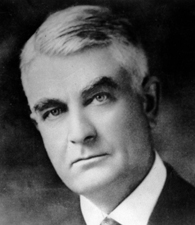A member of one of the most well-known families in medicine, Charles Horace Mayo was introduced to the medical profession at an early age. In the small, rural town of Rochester, Minnesota, he and his family started a clinic that would eventually draw patients from around the world.
Charles Mayo’s Early Days
Charles Horace Mayo was born on July 19, 1865, in Rochester, Minnesota. As a child, he was exposed to a multitude of learning opportunities. According to the Mayo Clinic, his mother taught him about botany, while his father, a physician, instructed him in physics, chemistry and anatomy.
After earning his medical degree from Northwestern University in 1888, Dr. Mayo joined his father and brother at their medical practice, which was generally referred to as the “Doctors Mayo.”
Sources in this Story
- Encyclopedia.com: William J. and Charles H. Mayo
- Time: Medicine: Midwest’s Mayos
- The New York Times: Famous Surgeon Under Knife Here
- Minnesota Monthly: 7 Wonders of MN
- American Journal of Public Health: Aphorisms of Dr. Charles Horace and Dr. William James Mayo: Reviewed by Milton Terris
The Establishment of the Mayo Clinic
The three Mayos “unwittingly” started the first group clinical practice, according to Time magazine. A tornado hit the small community of Rochester in 1883. Victims were forced to seek treatment in a dance hall because there was no local hospital and nuns from the local school helped the volunteer doctors care for the patients. After the emergency subsided, the nuns took it upon themselves to save money and purchase a hospital building.
When they had raised enough money, “old Dr. Mayo” took charge of new facility, Saint Mary’s Hospital, and ran it with his sons. According to the Mayo Clinic, Charles’ wife, Edith Graham, was the first nurse anesthetist at the hospital, and it was Charles Mayo who performed the first surgery at Saint Mary’s.
The establishment of the new hospital drew worldwide attention, and throngs of people traveled to Rochester to seek treatment from the famous Mayo brothers. In 1907, Dr. Wilfred T. Grenfell noted just how popular the Mayos had become: “The crowd in the waiting room is the nearest thing to a crowd after tickets to a football match that I have ever seen in any similar function. Almost every train that stops at this village station deposits fresh visitors in search of that help which they at least believe can best be obtained in this tiny township.”
The Mayos, along with a few other physicians, established a medical partnership; eventually William W. Mayo retired and just two Mayo brothers remained in the practice. Visiting surgeons were always welcome to come and observe procedures at the hospital, and the facility was often referred to by the medical community as the “Mayos’ Clinic” even though the actual practice name always included the names of all of the physicians. Eventually, the brothers established a school of medicine and a foundation named the “Mayo Clinic.”
The Rest of the Story
Charles Mayo retired from his work in 1930. Years later he contracted pneumonia while on a trip and died on May 26, 1939, just a few months before his older brother William. Attorney Thomas Spillane noted that Charles had a great fondness for children and an “interest in all that concerns them.” According to Spillane, people who knew him would always remember Mayo as “gentle, kindly, Dr. Charlie.”
William and Charles Mayo demanded the utmost professionalism at the Mayo Clinic. They reportedly once sent letters to the physicians on staff, scolding them for mowing their own lawns. Their influence has proven long lasting and while other facilites allow for casual dress, “Mayo still works [in a] coat and tie,” and all staff members, including the CEO, wear a name tag, writes Minnesota Monthly.
Both William and Charles Mayo learned by doing as they worked as physicians, and one of the chief ideas behind the Mayo Clinic was the exchange of information between doctors to improve patient care.
Somewhat notorious for his quotable remarks, Charles was known to have said, “One of the chief defects in our plan of education in this country is that we give too much attention to developing the memory and too little to developing the mind; we lay too much stress on acquiring knowledge and too little on the wise application of knowledge.”
This article was originally written by Lindsey Chapman; it was updated June 6, 2017.











